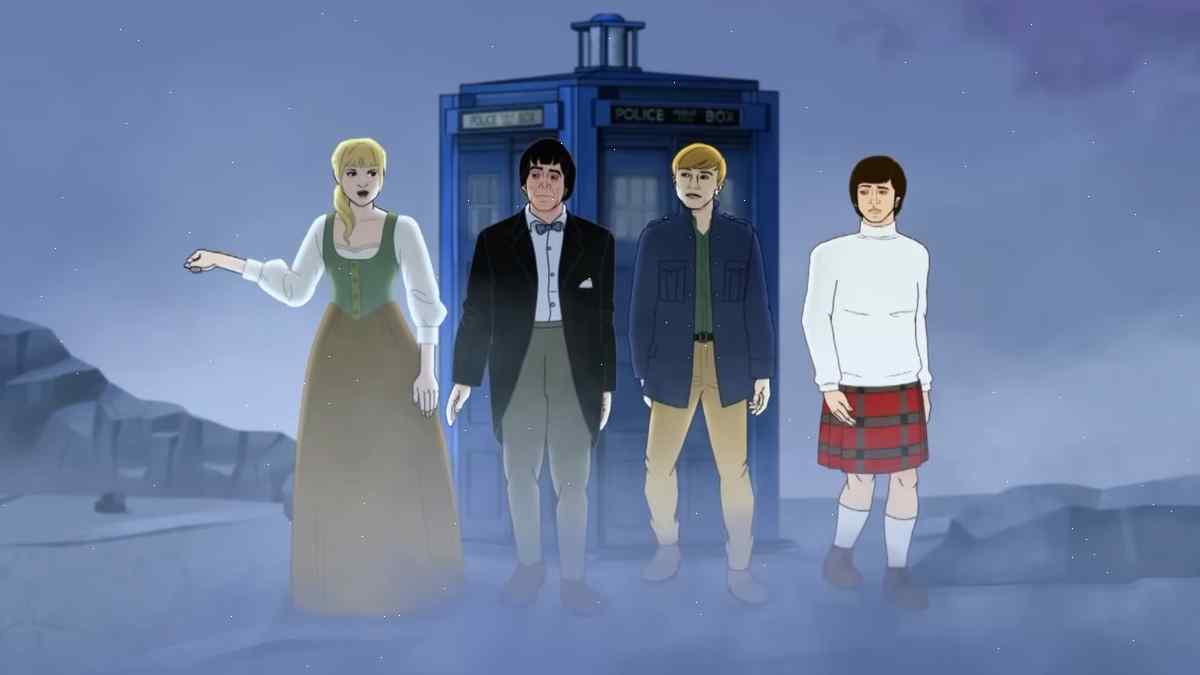For decades, Doctor Who has captured the hearts of audiences worldwide with its unique blend of science fiction, adventure, and humor. But beneath its shiny exterior lies a rich tapestry of history, waiting to be unraveled. In recent years, fans have been treated to a series of animated reconstructions of missing episodes, offering a glimpse into the show’s forgotten past. Now, a team of dedicated animators, historians, and restoration experts are working tirelessly to bring these lost chapters back to life.
The story begins in the 1960s when Doctor Who first burst onto British television screens. Produced by the BBC, the show quickly gained popularity, thanks to its clever writing, charismatic actors, and groundbreaking special effects. However, due to the limited technology and resources available at the time, many early episodes were either partially or completely erased, leaving behind only audio recordings and still images.
This is where the magic of animation comes in. Using advanced software and techniques, animators have been able to breathe new life into these lost episodes, meticulously reconstructing every detail, from character movements to background designs. The process is painstaking, with some animators spending hours, even days, perfecting single scenes.
One such animator is Rob Ritchie, a lifelong Doctor Who fan and creative director at Big Finish Productions, a company specializing in Doctor Who audio dramas. Ritchie has worked on numerous animated projects, including the critically acclaimed “Shada,” which was released in 2017.
“It’s a labor of love,” says Ritchie. “We’re not just recreating episodes for the sake of it; we’re preserving a part of history. These missing episodes are a vital piece of Doctor Who’s legacy, and it’s our responsibility to bring them back to life.”
But it’s not just about aesthetics. The restored animations offer a window into the social, cultural, and political climate of the time. For example, the missing episode “Marco Polo” features the first-ever depiction of a Chinese character in a British TV drama, highlighting the importance of representation and diversity in media.
Moreover, the animations provide a fresh perspective on familiar stories, allowing viewers to experience their favorite moments in a whole new light. According to Paul Vanezis, a renowned Doctor Who historian and consultant on the animated projects, “These animations allow us to appreciate the nuances of the performances, the direction, and the overall vision of the original producers and writers.”
As the restoration efforts continue, fans remain hopeful that more missing episodes will be recovered. Although the search has been ongoing for decades, rumors persist that some lost footage may still exist in obscure archives or private collections.
In the meantime, the animated reconstructions serve as a testament to the power of imagination and innovation. They demonstrate what can be achieved when passionate individuals come together to revive a shared heritage. Ultimately, the legacy of Doctor Who transcends mere entertainment; it represents a celebration of human ingenuity and artistic expression.
So, grab your sonic screwdriver, hop aboard the TARDIS, and get ready to embark on a journey through time and space like never before. With the help of animation, the missing chapters of Doctor Who’s history are finally being written back into existence, ensuring that the show’s enduring spirit will continue to captivate generations to come.

